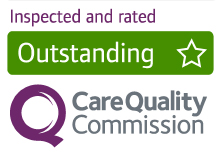Downloaded from www.mymenopausecentre.com
Direct URL: https://www.mymenopausecentre.com/gp-resources/migraine/
Migraine and Hormone Replacement Therapy (HRT)
We're often asked about the impact of the menopause transition and the associated fluctuation in oesterogen levels on women who suffer from migraine. In this information leaflet, our experts explain what migraine is, its causes and different types, how female hormones impact migraine, and if, as a migraine sufferer, you can take HRT.
Explore
Book an appointment
The highly experienced doctors and nurses in our menopause clinic are here to help you. Appointments from £190.
Book An AppointmentWhat is a migraine?
A person with migraine will feel well most of the time but can experience episodes of ‘migraine attacks’. A migraine attack is a set of symptoms that last between 4-72 hours and then fully resolve. While different people get different symptoms during a migraine attack, some common symptoms include:
- Head pains. This is often described as throbbing, pulsating or pressing and usually affects one side of the head (although not always.) The word migraine is derived from the Greek word ‘hemikrania’ which means half of the skull
- Changes in your vision such as flashing lights, zig-zag areas or blurry dots
- Feeling sensitive to lights (photophobia), sounds or smells
- Fatigue
- Feeling sick or being sick
- A dislike of movement
What is the impact of a migraine?
When a migraine attack happens, a person is usually not able to continue with their normal activities and they may want to be alone in a dark and quiet environment until it has resolved. Being still, with minimal stimulation, can help to manage migraine symptoms when they are happening. Migraine is recognised by the World Health Organisation as the third most disabling condition in the world and an individual attack is considered a disabling experience.
What are the different phases of a migraine attack?
There are four phases to a migraine attack. However, not everyone will experience all four and, if you have migraine, you may even notice that your phases differ between your attacks:
- Prodrome: This is the first phase and is also known as the premonitory phase. It is a set of warning signs such as tiredness, yawning, irritability, low mood and food cravings. This phase can last up to a few days.
- Aura: The most common aura is a visual aura and you might notice zig-zags in your vision, blurry spots, shimmering lights or distorted objects. It can feel like parts of your vision are looking down at a kaleidoscope, or the lights in the room that you are in are flickering. In rare instances, an aura can present as speech difficulties, numbness or weakness and when this happens it can feel quite frightening. An aura usually lasts between a few minutes to an hour and resolves before the start of a headache.
- Migraine: This phase is associated with the headache as well as other symptoms such as nausea, fatigue, and sensitivity to lights, noise and smells. This can last up to a few days.
- Postdrome: After an attack, a person can feel washed out and tired for up to a day.
What are the different types of migraine?
The three most common types of migraine are:
- Migraine without aura: this is experienced by 75% of people who have migraine
- Migraine with aura: this is experienced by 20% of people who have migraine
- Migraine aura without headache (silent migraine): if you have this type of migraine, you will experience an aura or other migraine symptoms but not a headache
There are also other rarer types of migraine that present with their own distinct pattern of symptoms.
What causes migraines?
Migraines can run in families meaning you may have a predisposition to them. Up to 80% of people who have migraine have a close relative with the condition. There are however triggers that increase the chance of getting a migraine in some people. Examples of triggers include:
- Poor sleep and fatigue
- Smoking
- Alcohol
- Stress and anxiety
- Dehydration
- Dietary triggers such as chocolate, certain cheeses, citrus fruit, caffeine and alcohol
- Low blood sugar levels
- Taking painkillers too frequently
- Menstrual cycle fluctuations
- Menopause transition
How do female hormones affect migraine?
During your menstrual cycle, your levels of oestrogen fluctuate and this can sometimes act as a trigger for a migraine attack:
- You may notice migraines happening in the lead-up to your period or during the first few days of it. This is because during this time oestrogen levels fall and this can act as a trigger for migraine, usually without aura
- A migraine can also happen mid-cycle when ovulation occurs. During this time oestrogen levels are high and this can, for some people, also be a trigger for migraine, usually with an aura
In the lead-up to the menopause (known as the perimenopause), oestrogen levels fluctuate erratically, taking you on what can feel like a hormonal rollercoaster ride. Because of this, migraine attacks can become more frequent, severe and unpredictable. Sometimes this can be the first time a person experiences a migraine. Symptoms associated with the perimenopause such as hot flushes, night sweats, poor sleep, anxiety and fatigue can also trigger a migraine.
It is important to remember that although the perimenopause marks a time when your migraine frequency can increase or start for the first time, this does not happen to everyone. Furthermore, after the menopause, your fluctuations in oestrogen will lessen and migraine attacks usually settle after a few years. This can feel quite welcoming to those who have struggled with hormone-related migraine.
Migraine and HRT
Can I have hormone replacement therapy (HRT) if I have migraine?
The answer to this is yes and for some women, some types of HRT can actually improve migraines by reducing hormonal fluctuations and improving menopausal symptoms.
Women are often worried about taking HRT when they suffer migraine because they have been advised in the past that they shouldn’t take the combined hormone contraceptive pill. This is because there is an increase in the risk of blood clots and stroke as a result of taking the oral contraceptive pill. For most women, this risk will be very small. If you suffer from migraine with aura, the baseline risk of stroke may be slightly higher than for someone who does not suffer from migraine. The risk of having a stroke is still very low and you are more likely to suffer a stroke as a result of other risk factors, such as smoking or high blood pressure.
Adding the combined pill with oral synthetic oestrogen then further increases the stroke risk which is why migraine sufferers with aura are advised not to take it. If HRT is taken with oestrogen in tablet form there is a small increase in the risk of blood clots and stroke also, so taking HRT containing oral oestrogens is not advised for migraine sufferers. Adding oestrogen through the skin will not affect this risk and so is the safest option if you suffer from migraine.
What type of HRT should I take if I have migraine?
It is important to select your HRT carefully and use a regime that minimises hormone fluctuations as much as possible. Below are some top tips to help you:
Your oestrogen replacement:
- Start with an oestrogen across the skin in the form of a patch, gel or spray. Compared to tablets, these preparations provide more stable oestrogen levels and will not increase the risk of blood clots or stroke above your baseline risk
- Patches might be slightly preferable compared to gels or spray as the blood level of oestrogen is more stable with patches
- Start with a low oestrogen dose and increase this slowly only if needed for symptom control
- If aura worsens or starts for the first time on HRT, this might suggest the dose of your oestrogen is more than you need and the dose should be reduced
Your progestogen replacement (this is required if you still have a womb, if you have womb lining left after surgery, or sometimes due to the presence of endometriosis):
- Bodyidentical progesterone (Micronised Progesterone/ Utrogestan) is a good choice because it can be calming and improve sleep. It has a neutral risk of stroke – i.e. it will not add to your baseline risk
- The Mirena coil is another good choice. The progestogen works in the womb meaning very little hormone reaches the rest of the body. It can also reduce heavy and painful periods which can be migraine triggers. It gives a stable dose of progestogen, which can be important in helping manage migraine in the menopause transition
- Progesterone regimes that are prescribed continuously minimise hormone fluctuations – for example, as in the Mirena coil
- Some progestogens can switch off your ovulation, which then stops your natural hormones from swinging. This can be a very effective treatment for migraine. Taking two Desogestrel progestogen-only pills daily is an example of this, although it is unlicensed
Can testosterone treatment help migraine?
The clinical data on this is limited and testosterone is not indicated to treat migraine.
What about vaginal oestrogen?
There is no evidence that vaginal oestrogen can trigger migraine when used long-term. Very occasionally when a vaginal oestrogen is first started there can be a temporary increase in migraine but this should settle quickly after a few weeks.
Non-hormonal management of migraine
Medication
Migraine may need separate management in addition to HRT. Some medications can be taken to treat migraine attacks when they occur. These include simple painkillers such as paracetamol and aspirin. Other medications that can also help include triptans and anti-sickness medication.
If your migraines are very frequent you might benefit from taking a daily preventative medication – as well as, or instead of, HRT. Examples include beta blockers (for example propranolol), amitriptyline, topiramate and candesartan and these can be discussed with your GP. You may need a referral to a neurologist to discuss any next steps.
What else can I do?
There are things that you can do to help reduce the frequency of migraine attacks. These include:
- Exercising regularly
- Staying hydrated
- Eating regular healthy meals and avoiding sugar dips
- Maintaining your weight within a normal BMI range
- Reducing stress levels
- Embracing good sleep hygiene
- Minimising caffeine and alcohol
- If you are taking regular painkillers sometimes it can help to cut back on these
- Create a migraine diary to identify triggers
Further information:
https://migrainetrust.org/understand-migraine/types-of-migraine/menstrual-migraine/
https://thebms.org.uk/wp-content/uploads/2022/12/06-BMS-TfC-Migraine-and-HRT-NOV2022-A.pdf
Authored by:
Dr Abbie Laing
Authored by:
Dr Clare Spencer
Registered menopause specialist, GP and co-founder; see Dr Clare in person at The Spire Hospital, Leeds or online
Book an appointment
The highly experienced doctors and nurses in our menopause clinic are here to help you. Appointments from £190.
Book An AppointmentJoin the pause. community
We’ve created pause. as a space for women to come together and share stories about their menopause experience, ask questions, and to find support and inspiration. We'll also share the latest news and updates on the menopause from our experts.
Want to be the first to hear our latest news? Join our pause. community today.
Share your email to receive the latest news, updates and information on new products and treatments from My Menopause Centre and our pause. community. You can unsubscribe at any time.
We're committed to protecting and respecting your privacy - see our Privacy Policy and Terms and Conditions

Book a consultation
Whether you want to discuss your symptoms, create a treatment plan that's right for you, understand some test results or have a check-up, the highly experienced doctors and nurses in our menopause clinic are here to help you.
Book nowReferences
-
MacGregor EA. Migraine, the menopause and hormone replacement therapy: a clinical review. J Fam Plann Reprod Health Care 2007; 33: 245–249. Crossref. PubMed.
-
Moehlig RC. Methyl testosterone for migraine of women; report of sixty cases. J Mich State Med Soc 1955; 54: 577–579. PubMed.
-
Glaser R, Dimitrakakis C, Trimble N, et al. Testosterone pellet implants and migraine headaches: a pilot study. Maturitas 2012; 71: 385–388. Crossref. PubMed.
-
MacGregor A. Migraine, menopause and hormone replacement therapy. Post Reproductive Health. Vol 24;1 2018
-
MacGregor A. Migraine and HRT. Tools for clinicians.
Contact My Menopause Centre
- General enquiries: hello@mymenopausecentre.com
- Book appointments online: Log into your account and go to 'My appointments'
- Book appointments by phone: 0333 444 1067
- Website: https://www.mymenopausecentre.com


















